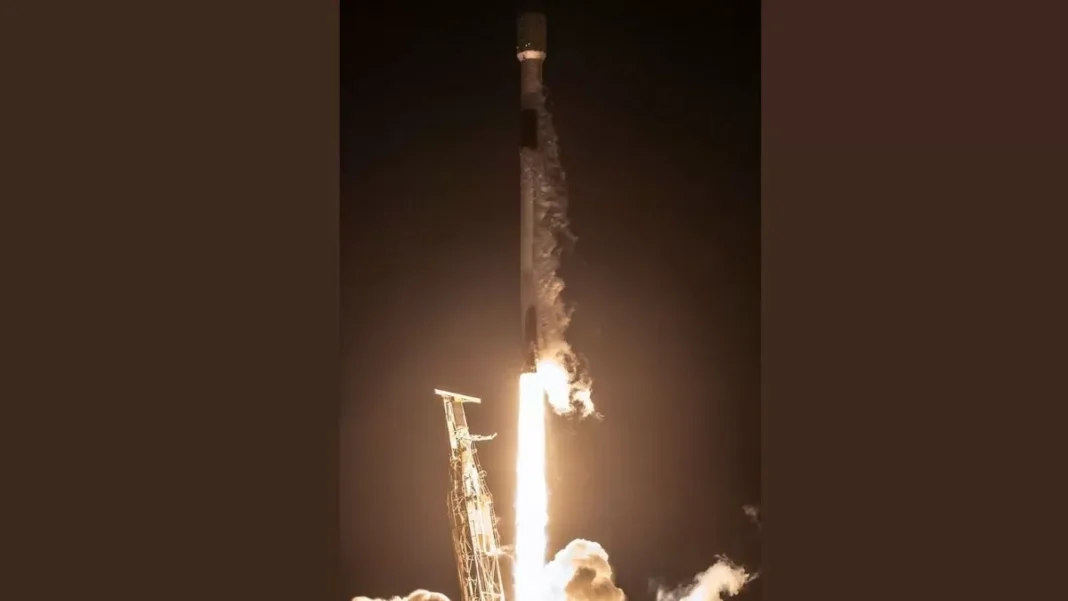NASA’s latest mission, the Electrojet Zeeman Imaging Explorer (EZIE), has successfully launched aboard a SpaceX Falcon 9 rocket from Vandenberg Space Force Base. This exciting mission consists of a trio of small satellites that will map auroral electrojets, powerful currents in Earth’s atmosphere that are linked to solar storms. The data collected by these satellites will not only enhance our understanding of space weather, but also help us to better understand planetary magnetism.
The launch of the EZIE mission marks another significant achievement for NASA and its partners. The successful deployment of the satellites is a testament to the hard work and dedication of the entire team involved in this project. It also highlights the incredible advancements in technology that have made it possible to launch small satellites into orbit with such precision and efficiency.
The EZIE mission is particularly significant because it focuses on studying auroral electrojets. These are powerful currents of charged particles that flow along Earth’s magnetic field lines and are responsible for the beautiful light displays known as auroras. While these lights may be mesmerizing to watch, they can also have a significant impact on our planet’s atmosphere and technological systems.
Solar storms, which are caused by intense bursts of energy from the sun, can disrupt these electrojets and cause changes in Earth’s magnetic field. This, in turn, can lead to disturbances in our communication and navigation systems, as well as power grids. By mapping these electrojets, the EZIE mission will provide valuable data that will help us to better predict and prepare for these space weather events.
In addition to its impact on space weather prediction, the EZIE mission will also contribute to our understanding of planetary magnetism. The data collected by the satellites will allow scientists to study the interactions between Earth’s magnetic field and the charged particles from the sun in more detail. This will not only improve our understanding of our own planet, but also provide insights into the magnetism of other planets in our solar system.
What makes the EZIE mission even more remarkable is the fact that it uses a revolutionary technology called the Zeeman effect. This effect, named after Dutch physicist Pieter Zeeman, allows scientists to measure the strength of magnetic fields by examining the splitting of spectral lines in the light emitted by charged particles. This innovative approach will provide more accurate and detailed measurements of Earth’s magnetic field and its interactions with the auroral electrojets.
Moreover, the EZIE mission is also paving the way for future space exploration. By launching small satellites, NASA is able to collect valuable data at a fraction of the cost of traditional missions. This not only makes space exploration more accessible, but also allows for more frequent and targeted missions. The success of the EZIE mission will undoubtedly inspire more innovative approaches to studying our planet and the universe.
The launch of the EZIE mission also serves as a reminder of the importance of international collaboration in the field of space exploration. The satellites were built and developed by the University of California, Berkeley and the University of Colorado, Boulder, with support from NASA’s Science Mission Directorate. This partnership has brought together some of the brightest minds in the field and has resulted in a mission that will benefit not just the United States, but the entire world.
As we celebrate this milestone in space exploration, we cannot help but be reminded of the incredible achievements of NASA and its partners. From landing on the moon to exploring the depths of our solar system, NASA continues to push the boundaries of what is possible and inspire future generations to reach for the stars.
In conclusion, the launch of the Electrojet Zeeman Imaging Explorer mission is a significant step forward in our understanding of space weather and planetary magnetism. Its success is a testament to the dedication, innovation, and collaboration of the entire team involved. The data collected by these satellites will undoubtedly pave the way for new discoveries and advancements in the field of space exploration. We eagerly await the results of this mission and look forward to the exciting future of space exploration that it represents.



